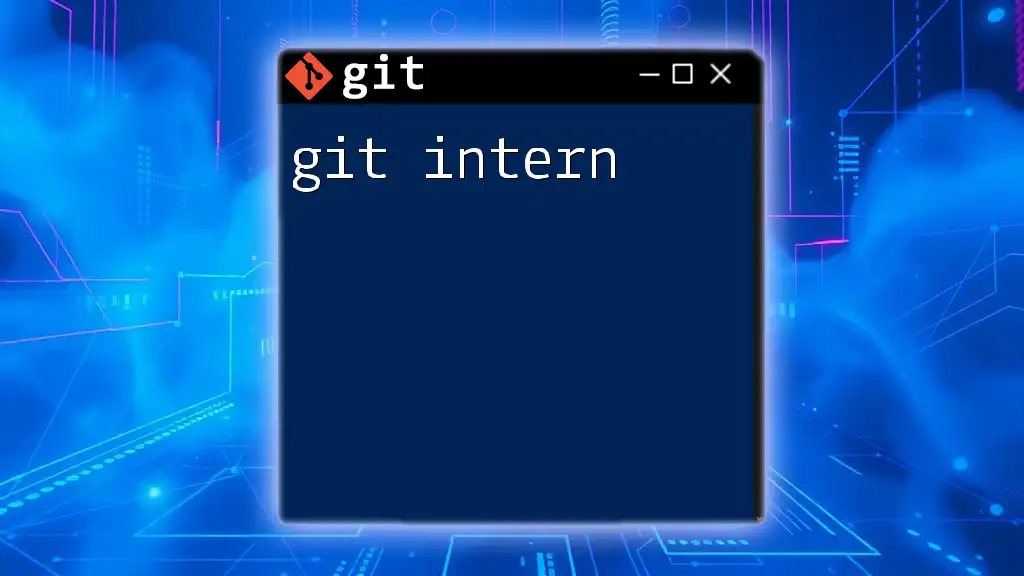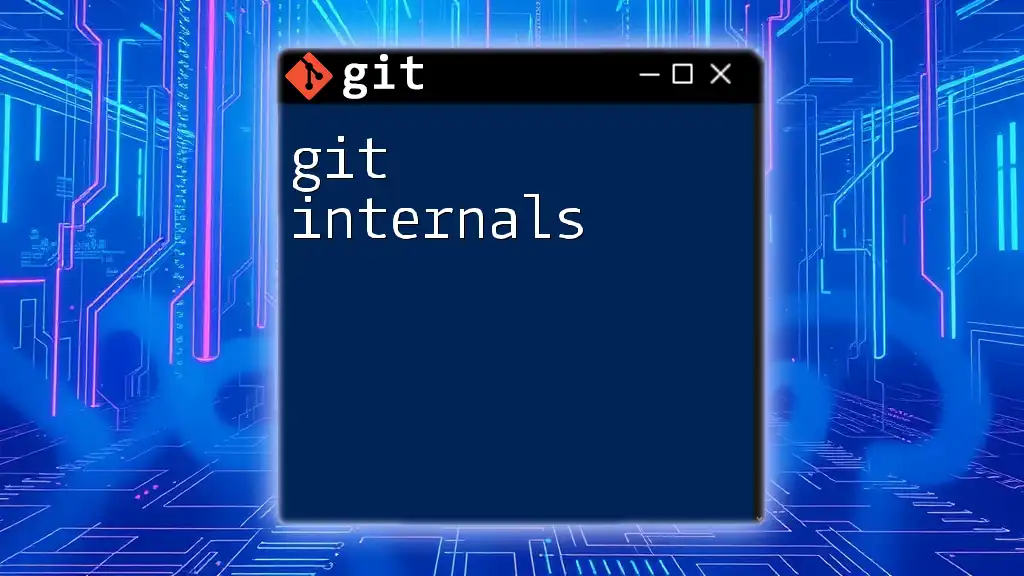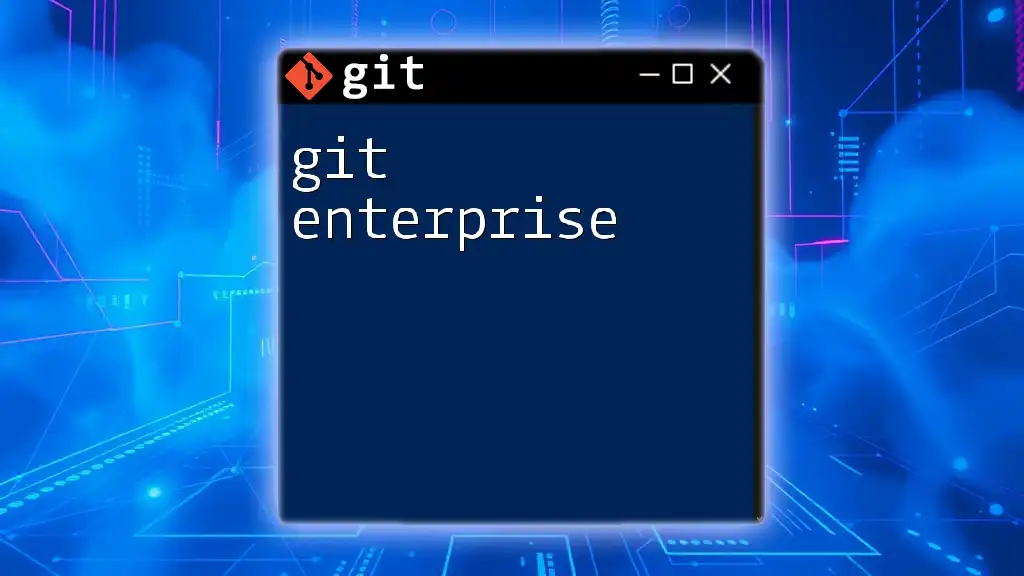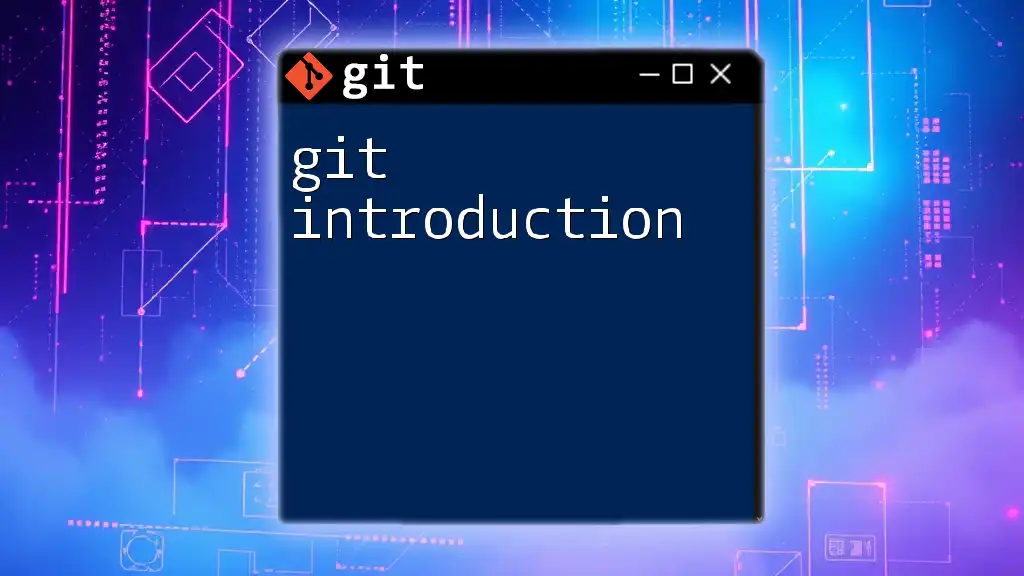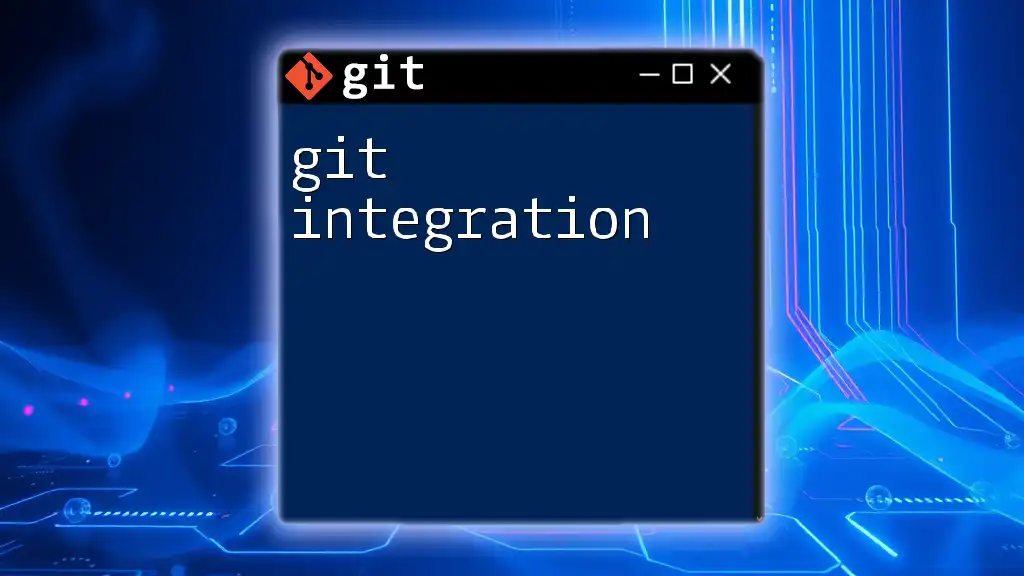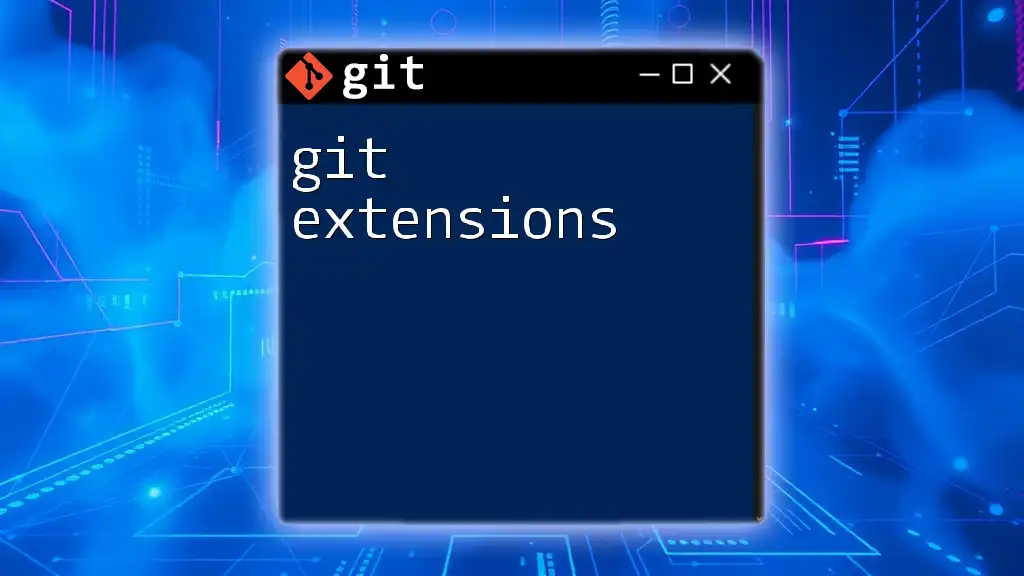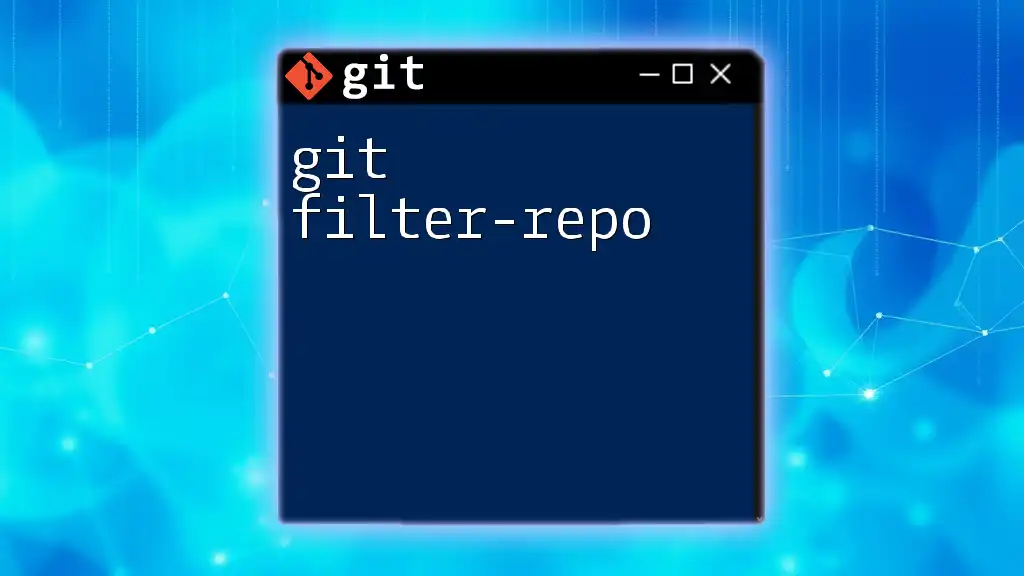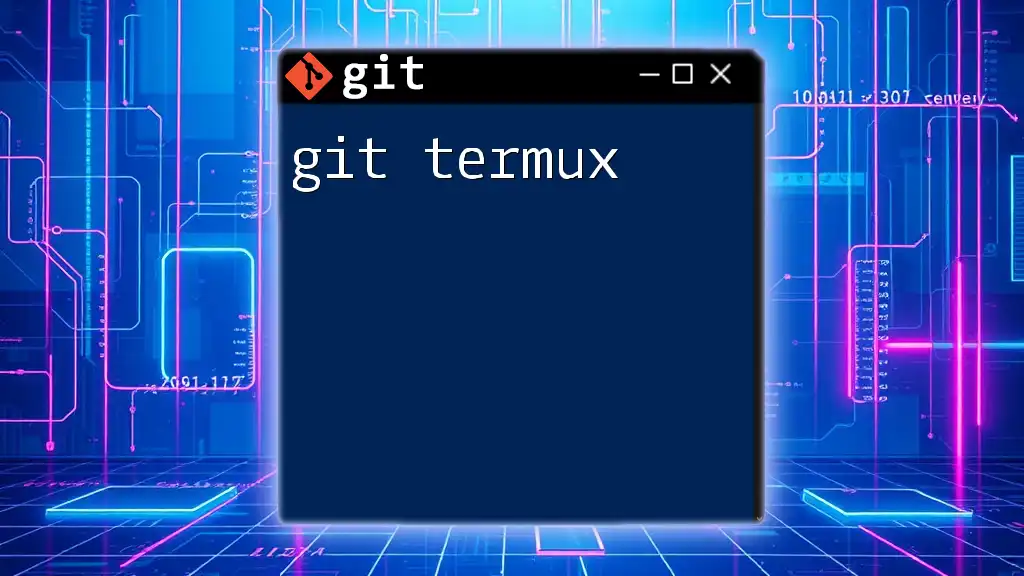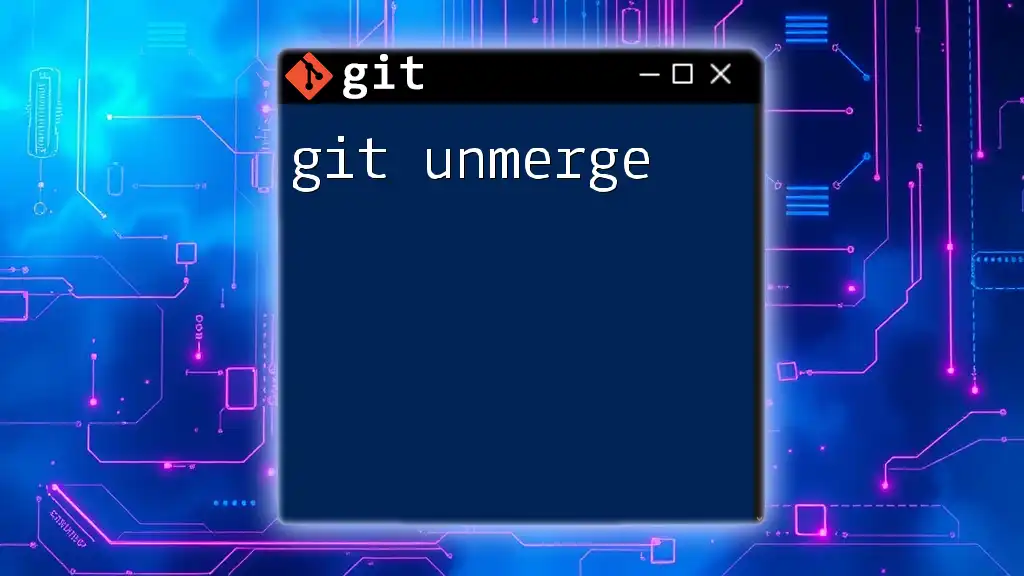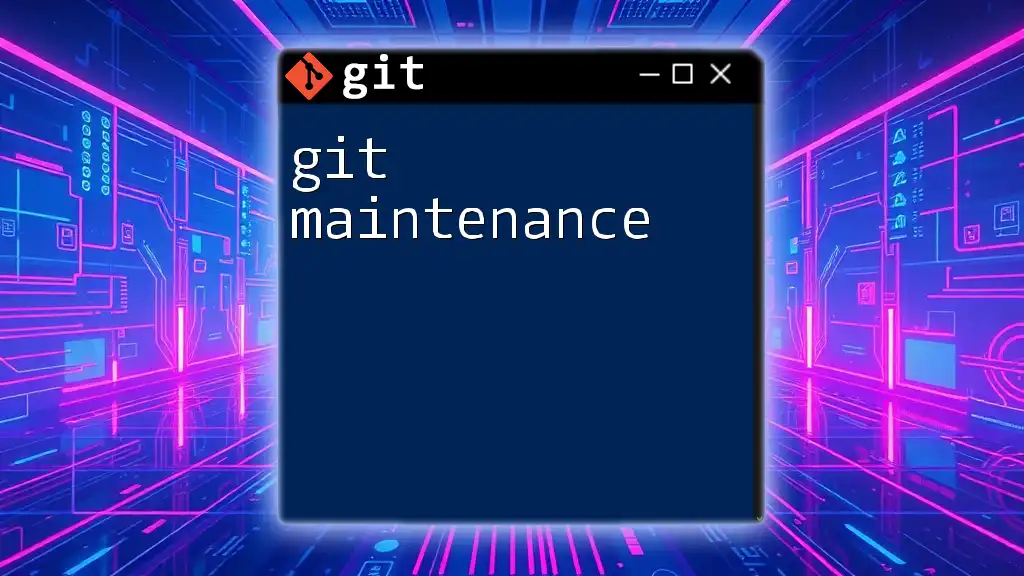A "git intern" is a temporary branch created to facilitate experimentation or testing without affecting the main development flow, often using a simple syntax to create it and switch to it quickly.
git checkout -b git-intern
Understanding Git Internals
Git internals are the core components and concepts that drive version control in Git. A solid grasp of these internals not only enhances your efficiency but also equips you with the knowledge to troubleshoot issues more effectively.
Key Concepts in Git Internals
Repositories
A Git repository is where all your project files and history are stored. Understanding the distinction between local and remote repositories is crucial:
-
Local Repository: This resides on your machine and allows you to make changes and commits without needing internet access.
-
Remote Repository: This is hosted on a server (like GitHub or GitLab), where collaborators can access and contribute to the project.
To initiate a new repository, you can use:
git init my-repo
This command creates a new directory named `my-repo` with its own `.git` subdirectory, containing all necessary files for version control.
Commits
In Git, a commit serves as a snapshot of your project at a given moment. Each commit is a unique identifier (a SHA-1 hash) that contains metadata such as the author, timestamp, and message.
Understanding the anatomy of a commit object is essential. Each commit records not just the changes but also a reference to its parent commit, creating a chain of history.
To make a commit, you would perform the following:
git add .
git commit -m "Initial commit"
Here, `git add .` stages all the changes, and `git commit -m` creates the commit with an accompanying message.
Branches
Branches in Git allow you to work on different features or versions of your project simultaneously. This concept is critical for collaborative projects, enabling multiple developments without interference.
Branches can be created and switched to using:
git branch feature-branch
git checkout feature-branch
The above commands create a new branch called `feature-branch` and switch you into it, allowing you to isolate your changes.
The Git Object Model
The Git object model comprises several types of objects that store data efficiently.
Blob Objects
Blob objects are the core building blocks containing the file data. Each file, regardless of its data type, is stored as a blob.
To fetch a blob, you can use:
git cat-file -p <blob-hash>
This command retrieves the content associated with a specific blob hash.
Tree Objects
Tree objects represent directories containing files (blobs) and other sub-directories (trees). This hierarchical structure is what allows Git to maintain an organized view of the project.
You can view the current tree with:
git ls-tree HEAD
This command lists the contents of the repository's current branch.
Commit Objects
The commit objects are critical to understanding how changes are tracked. Each commit object contains a pointer to its tree, along with metadata.
To view the details of a specific commit, use:
git show <commit-hash>
This command reveals the changes, metadata, and parent commits associated with that commit.
Tag Objects
Tag objects are references to specific commits, often used to mark release points in the project history. You can create both lightweight and annotated tags.
A lightweight tag is simply a bookmark:
git tag v1.0
An annotated tag, which includes additional metadata, can be created with:
git tag -a v1.0 -m "Release version 1.0"
The Ref Storage Mechanism
Understanding References (Refs)
Refs are pointers to commits, encapsulating branches, tags, and remote references. Understanding refs helps navigate the project's history effectively.
The Refs Directory Structure
Git organizes refs systematically. The refs/heads directory contains all local branch references, while refs/tags contains all tag references. You can check your current refs using:
git show-ref
The Git Index (Staging Area)
What is the Index?
The index, or staging area, plays a vital role in managing changes before they become part of the commit history. It allows you to group related changes and review them as a coherent batch before committing them to the repository.
Example Commands to Interact with the Index
To add files to the index, simply use:
git add filename.txt
You can also check the status of your files in the index with:
git status
This command informs you of changes staged for the next commit, changes that are not staged, and untracked files.
The Commit History and DAG Structure
Understanding the Directed Acyclic Graph (DAG)
Git employs a Directed Acyclic Graph (DAG) to structure its commit history. Each commit points back to one or more parent commits, creating a flow that cannot loop back on itself. This design is crucial for maintaining a comprehensive and manageable history of your project, enabling functionalities like branching and merging seamlessly.
Conclusion
Understanding Git internals is vital for anyone looking to optimize their version control practices. The insights into repositories, commits, branches, and other Git concepts empower you not only to use Git with greater proficiency but also to troubleshoot and resolve issues effectively. By diving into these internals, you enhance your existing skills and prepare for more advanced Git functionalities down the line.
Additional Resources
For those who wish to go deeper into Git internals, consider exploring books and articles dedicated to this topic, as well as online courses that provide interactive learning opportunities.
FAQs about Git Internals
Below are some common questions regarding Git's internal mechanics:
Q: What is a commit hash?
A: The commit hash is a unique identifier generated for each commit, allowing you to reference specific points in your project history easily.
Q: How do branches affect collaboration in Git?
A: Branches allow multiple team members to work independently on the same project, reducing conflicts and streamlining the integration of changes.
Q: Why is understanding Git internals important?
A: Knowing the internals improves your ability to utilize advanced features, troubleshoot issues, and manage complex projects effectively.
Armed with this understanding of Git internals, you are now ready to enhance your version control skills and streamline your development workflows!

